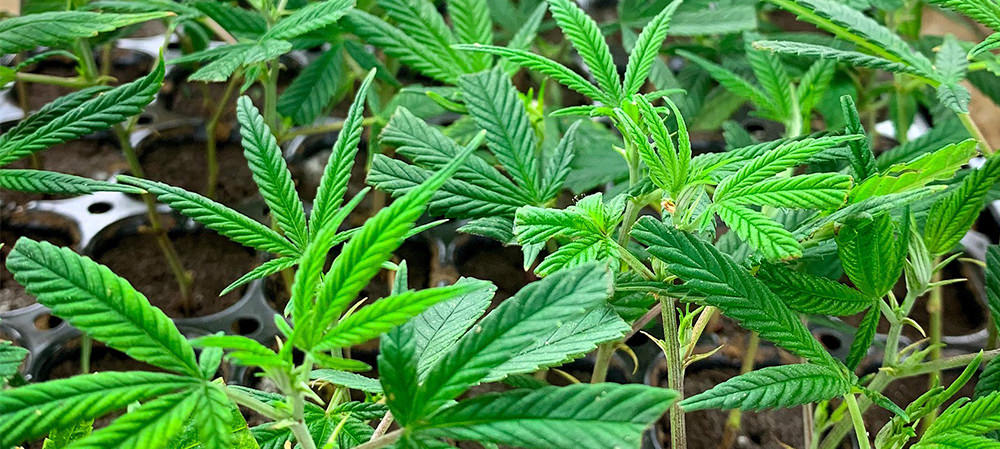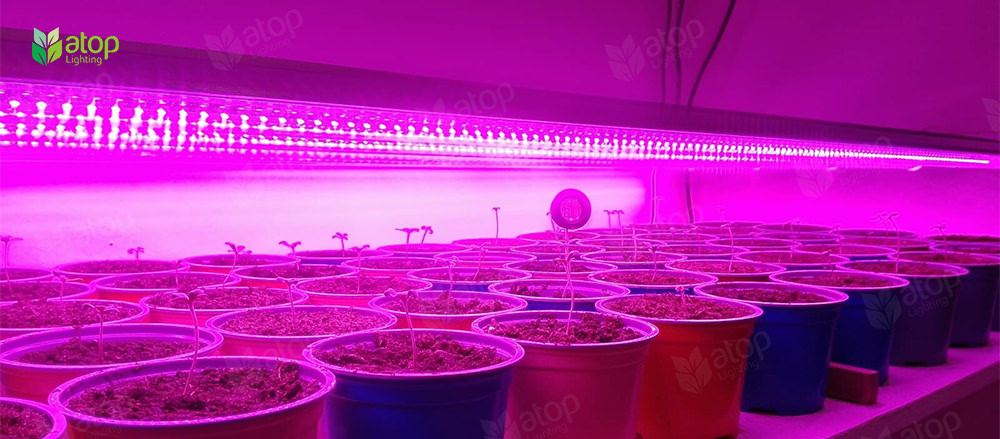Using LED Lighting to Master Plant Propagation
Have you ever been captivated by the magic of a tiny sprig transforming into a thriving plant? That is the magic of plant propagation.
Plant propagation is an essential part of horticulture, as it allows growers to produce more plants, diversify their crops, and preserve rare or valuable varieties. However, providing the proper lighting conditions for propagation can be tricky without access to natural sunlight. That’s where LED grow lights come in.
By using LED lighting, growers can control the growth and development of plants from seeds or cuttings, and achieve faster rooting, more compact and uniform growth, better quality, and higher yield.
Today, let's talk about plant propagation, the benefits of LED lighting for plant propagation, and some tips to optimize LED lighting for different stages of plant propagation.
What is plant propagation?
Plant propagation is the process of creating new plants from cuttings, seeds, or other plant parts. There are two main methods of plant propagation: sexual and asexual.
- Sexual propagation: This involves the natural transfer of pollen between flowers, which allows them to exchange genetic material and produce seeds. Growers then plant these seeds and the seeds will sprout into little seedlings, each with its own unique set of genes.
- Asexual propagation: This involves the production of clones through the separation of plant parts, such as stems, roots, or buds, resulting in genetically identical offspring. Tissue culture is an example of asexual propagation.

Benefits of LED lighting for plant propagation
LED grow lights provide indoor gardeners with the ability to successfully propagate plants year-round. The highly customizable and energy-efficient nature of LEDs makes them ideal for providing the exact light conditions delicate seedlings and cuttings need. Here are some main benefits:
- Faster Rooting: LED lighting can stimulate the formation and elongation of roots in cuttings, reducing the time and space required for propagation.
- More Compact and Uniform Growth: LED lighting can influence the morphology of plants, resulting in more compact and uniform growth, which can improve the quality and yield of the plants.
- Better Quality and Yield: LED lighting can enhance photosynthesis and metabolism in plants, resulting in better quality and higher yields, such as increased biomass, larger leaves, more flowers, and more fruit.
- Lower Energy and Labor Costs: LED lighting can save energy and labor costs by reducing the need for heating, cooling, and ventilation, and by allowing for efficient use of space and resources.
Optimizing LED lighting for different stages of plant propagation
One of the biggest advantages of using LED grow lights for plant propagation is the ability to customize the intensity and color spectrum for different growth phases. Adjusting the light as your plants progress allows you to optimize conditions at each stage for the highest success rates. Here's an overview of how to optimize LED lighting for different stages of plant propagation:
Seedlings
This is the stage when seeds sprout and develop their roots and leaves.
Germination requires either dark or light conditions, depending on the seed type. For light-dependent seeds, red light is most effective at breaking photodormancy. Aim for a minimum DLI (daily light integral) of 8-12 mol/m2/day or a PPFD (photosynthetic photon flux density) of 100-300 μmol/m2/s for quality plug production. When plants grow with more than 4 expanded leaves, you can increase the light level to 500-800 μmol/m2/s, or a DLI of 12+ mol/day. The specific light level depends on what you are growing.

Cuttings
Callus Formation
This is the stage when cuttings form a mass of undifferentiated cells at the cut end, which is the precursor for root initiation.
Callus formation requires high humidity and low light intensity (100 to 150 μmol/m2/s), with a duration of 8 to 12 hours per day. For low light conditions, the supplemental lighting should decrease to 50 to 70 μmol/m2/s. Although enough light can photosynthesize, producing the carbohydrates required to promote root development, the radiant energy from light can raise the temperature of plant tissue.
Root Development
This is the stage when cuttings develop adventitious roots from the callus tissue.
Root development requires more intense light than during callusing. The light intensity can be increased to 200-300 μmol/m2/s or a DLI of 10-12 mol/m2/day once roots have begun to form. Red light can enhance root development by increasing the activity of nitrate reductase, an enzyme that converts nitrate into ammonium, which is essential for root growth. Far-red light can also improve root development by increasing the ratio of auxin to cytokinin, another hormone that regulates cell division and differentiation.
Acclimatization
This is the stage when plants are transferred from the propagation environment to the production environment, where they may face different light, temperature, and humidity conditions. Acclimatization requires gradual adjustment of the light intensity, duration, and spectrum to avoid stress and shock. You can use LED lighting to mimic the production environment and prepare the plants for the transition. The maximum light level can be increased to 500-800 μmol/m2/s or a DLI of 12+ mol/day.
With this brief lighting guide, you may have a better understanding of using LED grow lights to master propagation. The key to targeting the desired lighting effects is choosing the right LED grow lights that provide the right light for each stage of propagation.
At Atop, we offer lighting solutions tailored to your needs. We also have extensive experience in lighting for plant propagation. Interested in the propagation lighting solutions we provide? Contact us!

